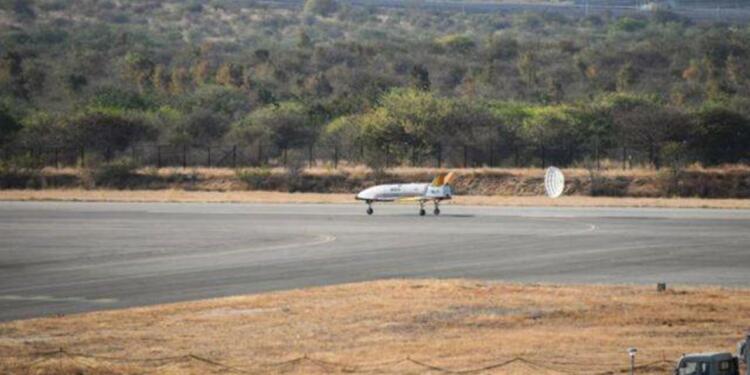ISRO reusable launch vehicle test: On Sunday, the Indian Space Research Organisation (ISRO) achieved a major milestone in its quest to send reusable rockets into space. The ISRO successfully conducted the ‘Reusable Launch Vehicle Autonomous Landing Mission (RLV LEX)’ at the Aeronautical Test Range of the Defence Research and Development Organisation (DRDO) in Karnataka’s Chitradurga district.
According to ISRO, the RLV took off as the underslung load of a Chinook Helicopter of the Indian Air Force and, after reaching an altitude of 4.6 km, was released for carrying out an autonomous landing on a runway.
ISRO’s RLV LEX
This technique of using a Chinook helicopter to launch an RLV and then performing an autonomous landing on a runway has never been used before. ISRO said the experiment was carried out under the exact conditions of a space re-entry vehicle’s landing, such as high speed, unmanned, precise landing from the same return path.
The success of the experiment has edged India closer to having its own reusable rockets and landing craft for specific mission goals. The RLV is essentially a space plane with a low lift-to-drag ratio, requiring an approach at high glide angles that necessitated a landing at high velocities of 350 kmph.
Also read: ISRO espionage case: Was Washington behind Nambi Narayanan’s arrest?
What’s even more impressive
ISRO first demonstrated the re-entry of its winged vehicle RLV-TD in its HEX Mission in May 2016. During that experiment, the vehicle had landed on a hypothetical runway over the Bay of Bengal as “precise landing” on a runway was an aspect not included in the HEX mission.
RLV's autonomous approach and landing pic.twitter.com/D4tDmk5VN5
— ISRO (@isro) April 2, 2023
The LEX mission achieved the final approach phase that coincided with the re-entry flight path exhibiting an autonomous, high-speed (350 kmph) landing. ISRO chairman Dr S Somanath said the success of the experiment was a great opportunity for ISRO to develop an Orbital Landing Experiment.
ISRO utilized several indigenous systems, including localized Navigation systems based on pseudolite systems, instrumentation and sensor systems, etc., which were developed by ISRO. The adaptation of contemporary technologies developed for RLV LEX makes other operational launch vehicles of ISRO more cost-effective, according to the space agency.
More experiments are in the pipeline to ensure that the RLV succeeds in payload delivery to low earth orbit, as ISRO plans to reduce the cost of the process by 80 percent. The Return Flight Experiment and other related tests of the RLV are also being planned.
Also read: Espionage Scandal, ISRO and Kerala Police: Another ‘Nambi Narayanan’ in making?
But ISRO isn’t stopping ISRO reusable launch vehicle test
This achievement by ISRO is a significant milestone for India’s space program. It shows the country’s growing technological capabilities and highlights the potential for future advancements in the field of space exploration. With the successful launch of the RLV, India is poised to become a major player in the global space industry. The success of this mission could lead to new opportunities for Indian space scientists and researchers and could also help to boost the country’s economy by creating jobs in the space sector.
Support TFI:
Support us to strengthen the ‘Right’ ideology of cultural nationalism by purchasing the best quality garments from TFI-STORE.COM


































